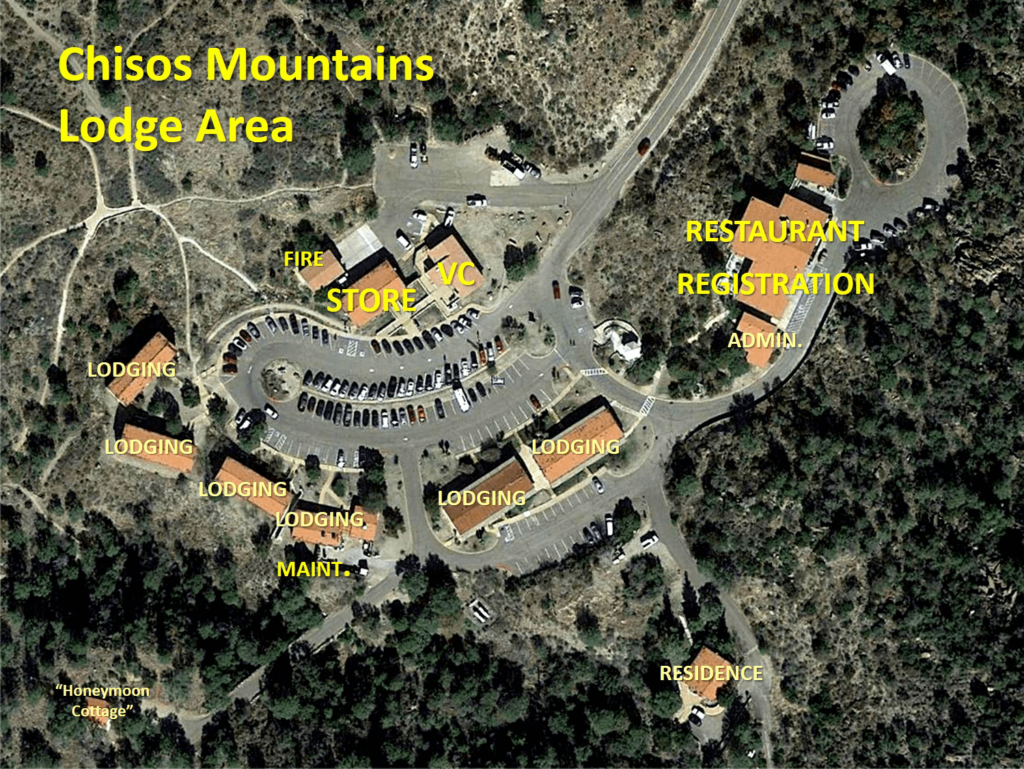
The Ultimate Guide: Big Bend National Park
The Chihuahuan Desert in the far west of Texas is home to Big Bend National Park. The park is named after the big bend in the Rio Grande River. This river forms a natural border between the United States and Mexico. Big Bend is known for its rugged and diverse landscape and covers over 800,000 acres. This makes it the largest protected area of Chihuahuan Desert in the United States. So plan accordingly and be ready to explore!
Big Bend is home to a variety of plant and animal life. This includes over 1,200 species of plants, 450 species of birds, and 75 species of mammals. The park is also home to several threatened and endangered species. Some of the most well known are the desert bighorn sheep and the Mexican gray wolf. If you’re lucky, you might spot one of these magnificent animals. So, be always on the lookout.
rvResortScout has a quick overview of Big Bend National Park TX. You can find that on rvResortScouts Big Bend listing.
Park History / General Overview
The park has a rich and varied history that dates back thousands of years. The park is located in the Chihuahuan Desert, which has been home to a variety of indigenous cultures. Some of these cultures include the Chisos, Jumano, and Mescalero Apache. These cultures have left behind a wealth of artifacts and rock paintings. Many of which can still be seen in the park today.
In the 19th century, the park was home to cowboys and ranchers, who used the land to graze their cattle. Tourists began to visit the area in the early 20th century, and in 1944, the park was officially established.
Today, Big Bend National Park is a popular destination for outdoor enthusiasts, who come to enjoy the park’s rugged terrain, diverse plant and animal life, and rich cultural history. As mentioned before, it’s also home to several threatened and endangered species, including the desert bighorn sheep and the Mexican gray wolf.
In addition to its natural beauty, the park is also known for its rich cultural history. The park is home to several historic sites, including the Chisos Mountains Lodge, which was built in the 1930s. It also hosts the Castolon Historic District, which was once a bustling hub of activity during the early 20th century.
Big Bend National Park: Getting Oriented
Big Bend is located in the Chihuahuan Desert, the largest desert in North America. The park spans over 800,000 acres and includes three main areas: the Chisos Mountains, the Rio Grande Wild and Scenic River, and the Chihuahuan Desert.
- The Chisos Mountains are located in the center of the park and are the highest point in the park, with an elevation of 7,800 feet. The Chisos Mountains offer a variety of hiking trails and are home to a diverse array of plant and animal life. This area offers the best chance to see some incredible wildlife, so be on the lookout.
- The Rio Grande Wild and Scenic River runs through the park and is a popular spot for rafting and kayaking. The river is home to a variety of fish, including catfish, bass, and perch.
- The Chihuahuan Desert is the largest and most remote area of the park. It’s home to a variety of plant and animal life, including cactus, yucca, and javelina.
Big Bend National Park Essentials
To get to the park, you can fly into the nearest airports in Midland or El Paso, Texas, and then drive to the park. The drive from either airport takes about four hours. If you’re driving to the park, it’s important to make sure your vehicle is in good condition and that you have a full tank of gas. You don’t want to end up stranded, so come prepared. The park is located in a remote area, and it’s a good idea to bring a spare tire and other essential supplies, such as water and snacks.
There are several rules and regulations that visitors must follow while in the park. These include staying on designated trails, respecting wildlife, and not littering. It’s also important to remember that the park is located in a desert, so it’s important to conserve water and bring plenty of supplies with you. The park can get very hot during the summer months, so it’s important to wear sun protection and stay hydrated.
The park has a visitor center located at Panther Junction, where you can find information about the park, attend ranger-led programs, and purchase souvenirs. The visitor center is open year-round and is a good place to start your visit to the park. You can also purchase a park map and learn about the park’s history and culture.
Things You Need to Know
Big Bend National Park is a great place for outdoor activities, such as hiking, rock climbing, and bird watching. There are over 150 miles of trails in the park, ranging from easy to strenuous. The park is also home to over 450 species of birds, making it a popular destination for bird watchers.
If you’re planning on hiking in the park, it’s important to come prepared. Wear sturdy shoes and bring plenty of water, snacks, and sun protection. Bring a map and a compass; cell phone service is spotty at best. Some trails in the park can be challenging, so it’s important to be in good physical condition and to pay attention to your surroundings.
Rock climbing is also a popular activity in the park, with a variety of routes for climbers of all levels. If you’re planning on rock climbing in the park, it’s important to come prepared and to follow proper safety procedures. This includes wearing the appropriate gear, such as a helmet and harness, and following the park’s rules and regulations.
Travel Tips / Best Hikes
The park can get very hot during the summer months, so it’s important to plan your visit accordingly. Try to avoid being outside during the hottest part of the day, and take breaks in the shade whenever possible. It’s also a good idea to wear loose, lightweight clothing, as well as a hat to protect yourself from the sun.
Now let’s cover some of the best hikes.
- South Rim Trail: This challenging hike takes you to the top of the Chisos Mountains and offers stunning views of the surrounding landscape. The trail is about 14 miles round trip and takes about 6-8 hours to complete, so be prepared.
- Emory Peak: This strenuous hike takes you to the highest point in the Chisos Mountains, with an elevation of 7,832 feet. The trail is about 8 miles round trip and takes about 6-8 hours to complete.
- Marufo Vega Trail: This moderate hike takes you through the Chihuahuan Desert and along the Rio Grande River. The trail is about 9 miles round trip and takes about 4-6 hours to complete.
- Hot Springs Trail: This easy hike takes you to a natural hot spring located in the Chisos Mountains. The trail is about 3 miles round trip and takes about 2-3 hours to complete.
- Boquillas Canyon Trail: This moderate hike takes you through the beautiful Boquillas Canyon and along the Rio Grande River. The trail is about 4 miles round trip and takes about 2-3 hours to complete.
Accommodations Within Big Bend National Park
There are several options for accommodations in Big Bend, including lodges, cabins, and RV sites. The park has two lodges located at Chisos Basin and Rio Grande Village, both of which offer a variety of rooms and cabins. The lodges have restaurants, gift shops, and other amenities, and they’re a great option for those looking for a more comfortable stay in the park.
If you’re planning on staying in an RV, the park has several RV sites located at Chisos Basin, Rio Grande Village, and Cottonwood Campground. The RV sites have electricity and water hookups, and they’re a great option for those who want to bring their own RV or camper.
The park also has a backcountry camping program, where visitors can pitch a tent and camp in designated areas throughout the park. To participate in backcountry camping, you must obtain a permit at the visitor center. Backcountry camping is a great option for those who want to experience the park’s rugged terrain and enjoy a more rustic experience.
Overall, there are several options for accommodations in Big Bend National Park, including lodges, cabins, RV sites, and backcountry camping. Whether you’re looking for a comfortable stay or a more rustic experience, there’s something for everyone in the park. Park staff are highly knowledgeable, so if you have any questions about lodging they will gladly help.

Safety
Big Bend is a safe place to visit, but it’s important to be aware of your surroundings and take precautions. The park is home to a variety of wildlife, including snakes and mountain lions. It’s important to stay on designated trails and keep a safe distance from wildlife.
Extreme weather conditions can occur in the park, as it can get very hot during the summer months and very cold during the winter. Therefore, it’s important to come prepared. Make sure you bring plenty of water and supplies, and wear sun protection to protect yourself from the heat. Here is a quick list of things you can do to be better prepared:
- Stay on designated trails
- Keep a safe distance from wildlife
- Be aware of your surroundings
- Bring plenty of water and supplies
- Follow park rules and regulations
- Wear sun protection
- Prepare for extreme weather conditions
What’s In The Surronding Area
There are several small towns located near Big Bend National Park, including Terlingua and Marathon. These towns offer a variety of restaurants, shops, and accommodations. They’re a great option for those looking for a more comfortable stay or for those who want to experience small town life in Texas.
The park is also located near Big Bend Ranch State Park, which is a state park located in Texas. Big Bend Ranch State Park covers over 300,000 acres and is known for its rugged terrain, diverse plant and animal life, and rich cultural history. The park offers a variety of activities for visitors, including hiking, rock climbing, and bird watching.
Big Bend National Park TX Wrap Up
Big Bend is a beautiful and unique place located in the Chihuahuan Desert of Texas. The park boasts rugged terrain, diverse plant and animal life, and rich cultural history. From hiking and rock climbing, to bird watching and exploring the park’s cultural history, there’s always something new to discover in this amazing place. The park also offers a variety of accommodations, including lodges, cabins, and RV sites, as well as a backcountry camping program. And with several small towns and state parks located in the surrounding area, there’s always something new to explore in this amazing region. So come see for yourself what Big Bend has to offer.